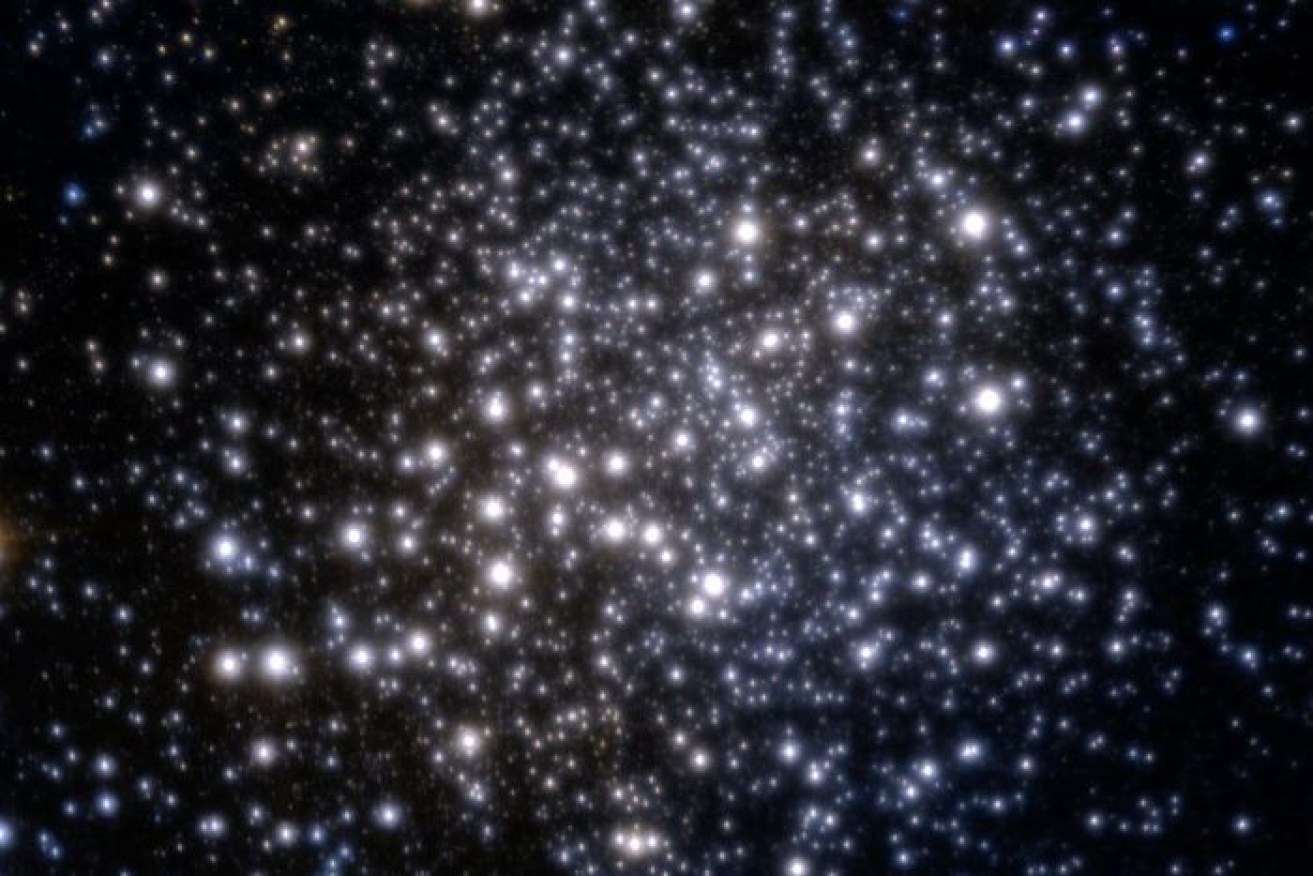Scientists discover incredible time capsule of ‘fossil stars’


Terzan 5 contains an unusual mix of stars Photo: ABC
Imagine peering through a dust storm and finding a self-contained live-action scene from ancient Rome or a dinosaur killing field in play.
Essentially, a piece of history that refuses to die as the rest of the world ages.
That’s what a team of astronomers has uncovered at the centre of the Milky Way: a unique cluster of stars known as Terzan 5 that formed around the same time as the galaxy, and yet has remained relatively undisturbed in billions of years.

Terzan 5 is 19,000 light years away. Photo: SciNews
In effect, Terzan 5 is a living museum display of where our part of the universe came from.
Forty or so years ago, when astronomers first detected Terzan 5, they regarded it as a blurry fog of brightness in the constellation of Sagittarius, 19,000 light years from Earth.
They classified this tightly packed ball of stars as one of about 150 globular clusters that are distributed in a spherical halo around the immense Galactic Bulge at the centre of the disk of the Milky Way.
Except, Terzan 5 is located within the bulge itself, where the galaxy’s oldest stars are breaking down.
But an Italian-led team of astronomers – analysing data from the European Southern Observatory’s Very Large Telescope, from the Hubble Space telescope and the Keck telescope – has found that Terzan 5 is like no other globular cluster, which ordinarily contain stars of the same age.
Terzan 5, however, contains stars that are from two distinct events of star formation – with an age gap of seven billion years. The first of its stars formed 12 billion years ago, with the birth of the Milky Way.
In 19,000 years light from us, Terzan 5 is one of the most amazing and intriguing places in our galaxy! pic.twitter.com/Z8Zh4mUItf
— Domenico Calia (@CaliaDomenico) September 10, 2016
The second generation of stars came about 7.5 billion years later, formed from a gaseous cloud at least 100 million times the mass of our own sun.
(Other globular clusters will have used up all their available gas to build stars and then go on to burn out over time.)
“We think that some remnants of [Terzan 5’s] gaseous clumps could remain relatively undisrupted and keep existing embedded within the galaxy,” explained Francesco Ferraro from the University of Bologna, Italy, and lead author of the study.

Science fans have been enamoured by the smoky beauty of the cluster. Photo: ABC Go
“Such galactic fossils allow astronomers to reconstruct an important piece of the history of our Milky Way.”
Dr Ferraro added that Terzan 5 could represent “an intriguing link between the local and the distant universe, a surviving witness of the galactic bulge assembly process”.
The research has been published in The Astrophysical Journal, in a paper titled The age of the young bulge-like population in the stellar system Terzan 5: linking the Galactic bulge to the high-z Universe.








